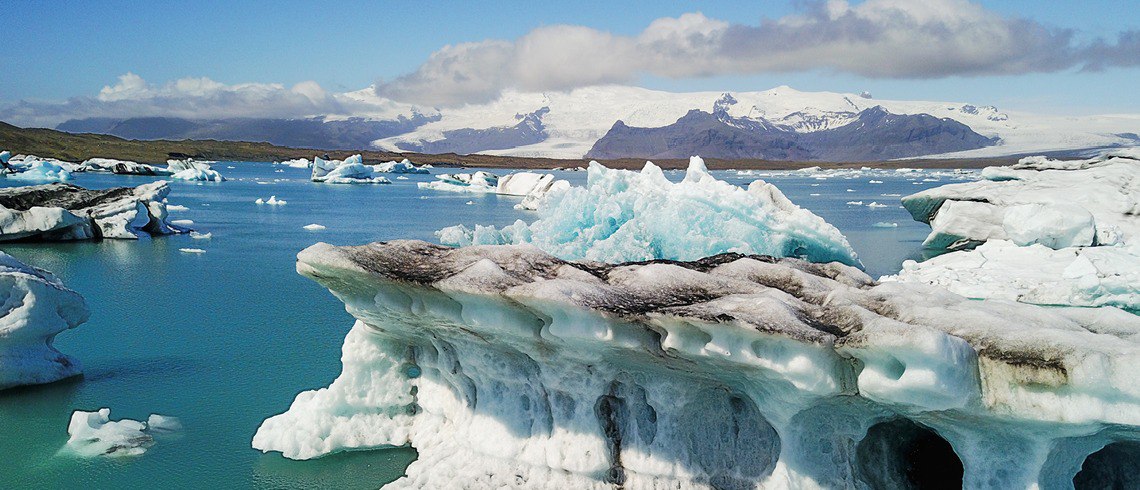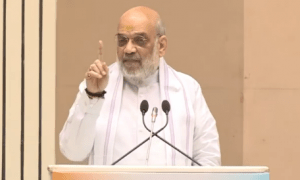Climate Change is a pressing global challenge. It calls for collective human action & comprehensive response. In India, faith & nature have had a deep link since ancient times” – PM Narendra Modi
Canada and parts of the US have made it to the global headlines for hitting unusually high temperatures, in what is termed as a ‘pressure cooker’ heatwave by the World Meteorological Organization (WMO).
UN’s specialized agency, responsible for atmospheric science & climatology took to Twitter to notify about the dangerously high temperatures in parts of the USA & Canada. It said, “Extreme heatwave is baking Northwest USA & Western Canada, having major impacts on health, ecosystems, and economy. Multiple records have been broken with skyrocketing temperatures.”
In addition, lightning strikes continue to spark dozens of wildfires in western Canada. It is not long ago when unprecedented fires swept across the Amazon forests. The glaciers of Antarctica, the world’s largest contributor to rising sea levels, continue to melt rapidly. And, if we look locally, there’s no dearth of incidents of wildfires, floods, or glacial bursts.
However, what lies at the heart of Mother Earth? What has ousted it to wreak havoc onto this beautiful planet?
Where lies the problem?
While it is almost impossible to reflect a single cause to the multifaceted ecological problems facing the world today, however, it cannot be ruled out that climate change is the root cause of most of these.
What is Climate change?
A modification in the Earth’s climate brought as a result of atmospheric changes and interactions between the atmosphere and geologic, chemical, biological, and geographic factors within the Earth system, over a period of time, can be termed as climate change. In simple terms, it refers to the global rise in average temperatures.
What is causing climate change?
There’s no denying the fact that the phenomenon of climate change is human-driven.
Acclaimed international agencies like the U.S. Environmental Protection Agency (EPA), the National Aeronautics and Space Administration (NASA), and the National Oceanic and Atmospheric Administration (NOAA) reiterate, based on studies that climate change is certainly a result of mindless human activities.
As per popular scientific consensus, the burning of fossil fuels like oil and coal constitutes the primary cause of climate change. It releases carbon dioxide and other greenhouse gases that trap heat within the atmosphere. This, in turn, increases the atmospheric temperature, leading to rising sea levels, severe weather events, and droughts, thus, rendering landscapes vulnerable to wildfires.
While these gases are naturally occurring, constituting a critical part of our ecosystem & the Earth’s temperature control system, it is its concentration that is troublesome. For example, the atmospheric concentration of CO2 never rose above 300 parts per million since the advent of human civilization. However, today it stands at about 400 ppm, a level that was untapped in more than 400,000 years.
How it affects us?
What may seem like a small increase in Earth’s temperature, caused by climate change may have severe effects on health, ecosystems, economy, and the planet at large. The average temperature of the earth has gone up by 1.4° F over the past century and it is only expected to rise, as much as 11.5° F, over the next.
This rise in the earth’s atmospheric temperature leads to rising sea levels due to the melting of glaciers, ocean warming causes severe and frequent storms, and additional rainfall often leads to flooding. Further, less rainfall causes droughts and increases the incidence and severity of wildfires, which in turn threaten habitats, homes, and lives. Heatwaves too contribute to human deaths.
Easy ways to tame heatwaves caused by climate change:
1.) Stay hydrated; drink lots of water and eat juicy-watery foods
2.) Wear comfortable, loose-fitted clothes, made of breathable fabrics
3.) Avoid direct sunlight and try to stay indoors
4.) Take frequent showers, use fans to reduce body temperatures
Global efforts to reverse climate change:
As part of global efforts to mitigate the enormous effects of climate change, the Paris Agreement was signed. As a pioneering step in the longstanding fight against the man-made phenomenon of the global temperature rise, it inspired countries to take steps at the administrative and community level. Thus, Nationally Determined Contributions were set and the Solar Alliance, pitched in by India was adopted.
India pioneering to combat climate change:
India is among the top three nations in the world that are leading towards global renewable energy growth. It is also one of the few nations in the world that is set to over-achieve the targets set in the Paris Agreement.
Renewable energy: India gears to have 60% renewable energy ie., 450 GW by 2030.
Further, India has some of the lowest solar tariffs globally, dropping to ₹2.36 ($0.0316)/kWh with thermal capacity declined from 70% in 2015 to 61% in 2020.
Emissions: The emission intensity of India is already reduced by 21%, with its target to reduce the emissions intensity of GDP by 33-35% by the next decade.
India Cooling Action Plan: The action plan works to build efficient buildings and cool roofs to save energy and reduce heat-trapping hydrofluorocarbons (HFCs).
FAME (Faster Adoption & Manufacturing of Hybrid and Electric Vehicles): The government’s FAME-II scheme works to promote E-vehicles and to efficiently build the E-vehicle ecosystem in the country.
Yet, steps must be taken at the individual level as well to offshoot individual carbon footprints.






















 WhatsApp us
WhatsApp us